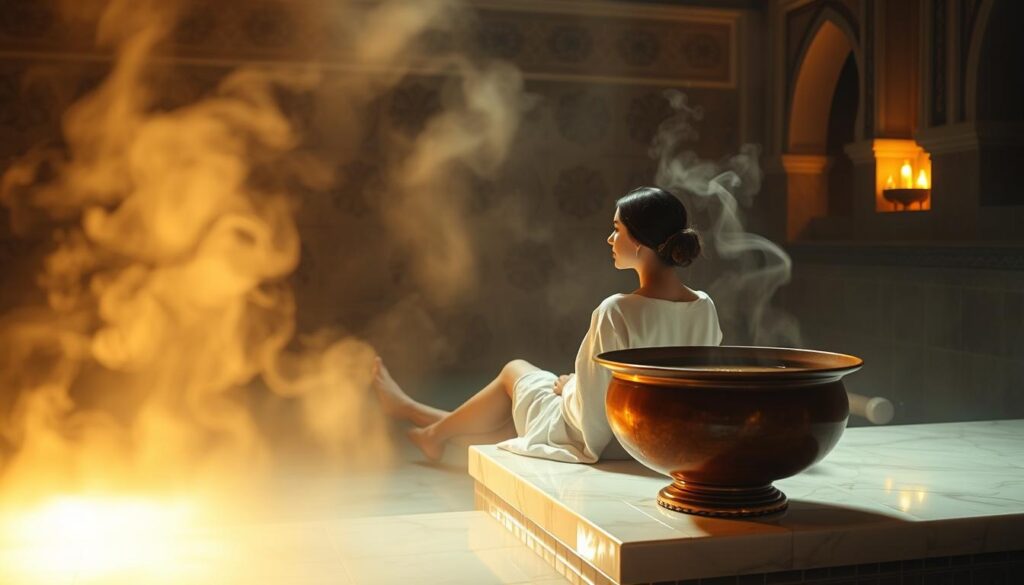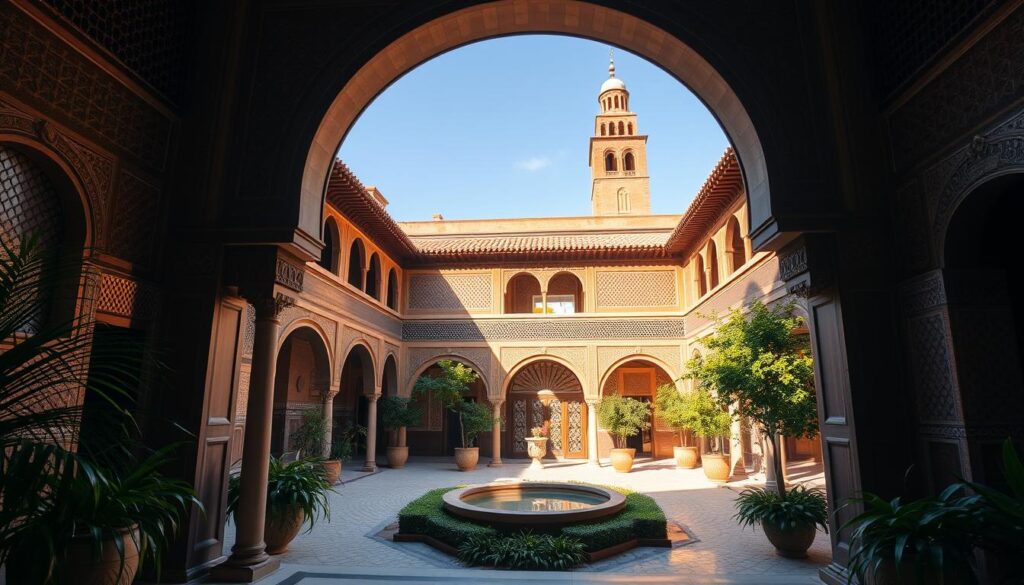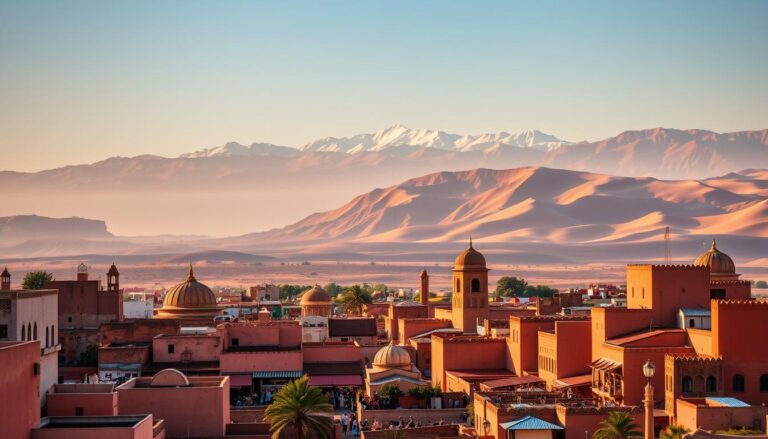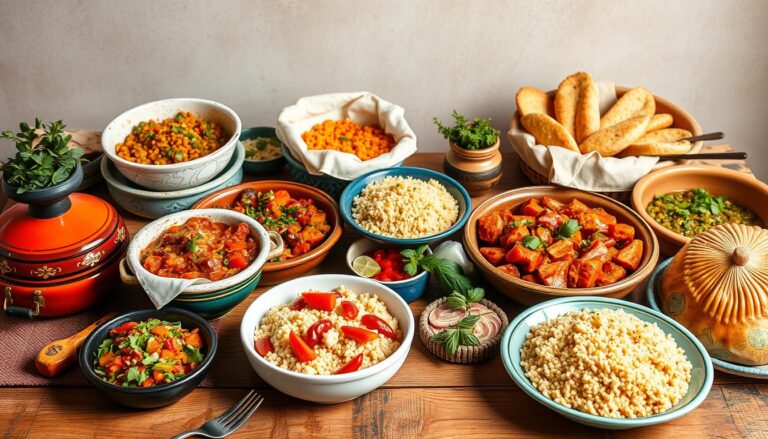Top Moroccan Cultural Experiences You’ll Never Forget
Imagine stepping into a world where every corner tells a story. Moroccan traditions bring life to every moment. Morocco is more than a place; it’s a journey that changes how you see the world. Your adventure through Moroccan cultural experiences will be magical.
From the moment you arrive, you’ll be hit with a sensory explosion. Vibrant markets, intricate architecture, and warm hospitality make Morocco unforgettable. These traditions are not just sights; they are living, breathing moments waiting to be discovered.
Whether you’re exploring ancient medinas, sharing mint tea with local families, or seeing desert landscapes, each experience connects you with Morocco’s rich heritage. Get ready to make memories that will last long after your journey ends.
Table of Contents
Key Takeaways
- Discover authentic moroccan cultural experiences beyond typical tourist paths
- Immerse yourself in centuries-old traditions and local customs
- Explore diverse landscapes from bustling cities to serene deserts
- Connect with local communities through genuine interactions
- Create unforgettable memories that transcend typical travel experiences
Exploring the Ancient Medinas: A Journey Through Time
Step into the heart of Morocco’s most captivating urban landscapes. Ancient medinas reveal centuries of cultural richness. These walled cities offer an immersive experience into Moroccan cultural experiences that will transport you through time and tradition.
The medinas represent more than just historic neighborhoods. They are living museums of Moroccan architecture. Every stone and pathway tells a story of generations past.
Traditional Souks and Market Culture
Your journey through the medina begins in its vibrant markets. These markets overwhelm and delight with sensory experiences. Explore these bustling marketplaces to discover:
- Handcrafted leather goods
- Intricate metalwork
- Colorful textile displays
- Aromatic spice collections
Architecture and Historical Significance
Moroccan architecture in these ancient cities showcases remarkable design principles. Witness stunning examples of architectural mastery through landmarks like:
- Ben Youssef Madrasa
- El Badi Palace
- Bahia Palace
| Landmark | Architectural Feature | Historical Period |
|---|---|---|
| Ben Youssef Madrasa | Intricate Zellige Tilework | 16th Century |
| El Badi Palace | Grand Courtyard Design | Late 16th Century |
| Bahia Palace | Ornate Carved Woodwork | 19th Century |
Local Life in the Medina Streets
Walking through medina streets offers an authentic glimpse into daily Moroccan life. Watch artisans craft traditional goods. Observe families navigating narrow alleys. Feel the living history surrounding you.
Each step through these ancient streets connects you deeper to Morocco’s rich cultural tapestry. Your journey becomes an unforgettable exploration of history, art, and human connection.
The Magic of Moroccan Tea Ceremonies and Hospitality
Step into the heart of Moroccan traditions and discover the soul-warming ritual of tea ceremonies. Moroccan hospitality turns a simple drink into an art form. It connects people, celebrates friendship, and tells stories passed down through generations.
The Moroccan tea ceremony is more than just brewing tea. It’s a carefully choreographed social experience. It reflects deep cultural values of respect, generosity, and community. When you’re invited to share tea, you’re experiencing a time-honored tradition that has been perfected over centuries.
- Tea is typically prepared with green tea leaves and fresh mint
- Pouring tea from a height creates a signature frothy top
- The first pour is often returned to the pot to ensure perfect flavor
Your host will skillfully prepare the tea, typically using a beautiful silver teapot. The process involves multiple pours, each designed to blend flavors. Moroccan hospitality shines through in every carefully executed movement.
“To drink tea in Morocco is to understand the rhythm of life itself.” – Moroccan Proverb
The tea ceremony typically involves three rounds, each with a slightly different flavor profile. The first is bitter like life, the second strong like love, and the third sweet like death. This represents life’s complex journey.
By participating in this ritual, you’ll gain more than just a delicious beverage. You’ll connect with a profound cultural experience. It embodies the warmth and generosity of Moroccan traditions.
Unforgettable Desert Adventures in the Sahara
The Sahara Desert is a top spot for moroccan cultural experiences. It offers a deep dive into Morocco’s stunning landscapes. Your journey through this golden land will show you the moroccan lifestyle and ancient traditions.
Walking into the Sahara is like entering a new world. The endless sand dunes are breathtaking. The desert’s beauty and quiet make it perfect for learning about culture.
Berber Camp Experiences
Staying in a traditional Berber camp gives you a real look at desert life. You’ll see:
- Handwoven wool tents with intricate designs
- Authentic Berber cuisine prepared over open fires
- Warm hospitality that has defined desert communities for generations
Camel Trek Traditions
Riding camels across the dunes connects you to old travel paths. These ships of the desert helped traders and nomads cross tough terrain.
Stargazing and Desert Music
At night, the Sahara turns into a star-filled wonderland. The sky is full of stars without city lights. Traditional musicians play, adding to the magic of the night.
“In the Sahara, every grain of sand tells a story, and every star whispers an ancient secret.” – Moroccan Proverb
Traditional Hammam Experience: Ancient Wellness Rituals

Dive into the heart of moroccan traditions with a transformative hammam experience. It’s more than just a spa treatment. This ancient wellness ritual is a key part of moroccan lifestyle, offering a true cultural dive.
When you step into a traditional hammam, you enter a sacred space. It’s a place of purification and relaxation. For centuries, these steam baths have been gathering points and wellness centers in Moroccan communities.
“The hammam is not just a bath, it’s a spiritual cleansing that connects body and soul.” – Moroccan Wellness Proverb
Your hammam journey has several key stages:
- Entering a warm steam room to open pores
- Applying traditional black soap for deep cleansing
- Thorough exfoliation using a special kessa glove
- Gentle massage with argan or olive oil
- Final rinse with cool water to close pores
The experience is more than just physical cleansing. It’s a meditative practice. It connects you with generations of moroccan traditions, showing you the culture’s wellness and community values.
Locals see the hammam as a holistic healing ritual, not just a hygiene routine. You’ll leave feeling refreshed, with soft skin. You’ll also gain insight into moroccan lifestyle’s focus on self-care and social connection.
Moroccan Cultural Experiences in the Atlas Mountains
The Atlas Mountains in Morocco are a stunning gateway to authentic Moroccan culture. These mountains are like a natural museum, showing the traditions of the Berber people. They have kept their unique way of life for centuries.
Exploring Berber Village Life
Traveling through the mountains takes you away from Morocco’s busy cities. Berber villages show incredible strength and cultural preservation. You’ll see communities that stick to their traditional ways, even with modern changes.
- Learn about centuries-old agricultural techniques
- Observe traditional stone house construction
- Experience daily rhythms of mountain communities
Masters of Traditional Craftsmanship
The Atlas Mountains are full of Moroccan arts and crafts. Local artisans show amazing skills passed down through generations.
| Craft | Unique Characteristics | Cultural Significance |
|---|---|---|
| Textile Weaving | Intricate geometric patterns | Storytelling through design |
| Pottery | Natural clay techniques | Representation of ancestral knowledge |
| Metalwork | Handcrafted silver jewelry | Symbolic cultural expressions |
Mountain Hospitality Customs
Berber mountain communities are known for their warm welcome. Visitors often get mint tea and a heartfelt greeting. It’s a chance to connect with people beyond cultural differences.
“In the Atlas Mountains, every stranger is a potential friend.” – Traditional Berber Proverb
Architectural Wonders: From Riads to Royal Palaces

Explore the stunning world of Moroccan architecture. Each building has a rich story of cultural fusion and artistic brilliance. Your journey through Moroccan architecture shows a stunning design tapestry. It has evolved over centuries, blending Islamic, Andalusian, and French colonial influences.
Moroccan cultural experiences are deeply tied to architectural marvels. These marvels showcase the country’s incredible design heritage. From intricate geometric patterns to ornate tilework, each structure tells a unique chapter in Morocco’s history.
- Royal Palaces with elaborate mosaic decorations
- Traditional Riads featuring central courtyards
- Monumental mosques with sophisticated architectural details
Discover the iconic structures that define Moroccan architecture. See the magnificent Hassan II Mosque in Casablanca and the historic Koutoubia Mosque in Marrakech. These architectural gems show the extraordinary craftsmanship and spiritual significance in Moroccan design.
| Architectural Style | Key Characteristics |
|---|---|
| Islamic Architecture | Geometric patterns, intricate tilework, arched doorways |
| Andalusian Influence | Elaborate courtyards, detailed plasterwork, water features |
| Riad Design | Interior gardens, decorative tiles, traditional layout |
When visiting Morocco, staying in a riad is a must. These traditional homes have stunning architectural elements. You’ll see carved wooden ceilings, colorful zellige tiles, and peaceful inner courtyards that take you back in time.
“Architecture is a visual language that speaks the story of a civilization.” – Moroccan Design Expert
Culinary Journey Through Moroccan Flavors
Dive into the heart of moroccan cuisine, where every bite tells a story. It’s a tale of tradition, passion, and cultural richness. Your culinary adventure will take you through a world of flavors, aromas, and cooking techniques.
Moroccan cuisine is more than just food. It’s a celebration of community, history, and hospitality. You’ll discover a world where spices, herbs, and cooking methods blend to create extraordinary memories.
Traditional Cooking Classes
Immerse yourself in authentic cooking experiences. These classes offer a unique chance to:
- Learn traditional cooking techniques passed down through generations
- Understand the cultural significance of each ingredient
- Master classic dishes like tagine and couscous
- Connect with local chefs who share personal stories and culinary secrets
Street Food Adventures
Explore the vibrant street food scene. Moroccan cuisine comes alive in bustling markets and hidden alleyways. Your taste buds will embark on an exciting journey through:
- Savory merguez sausages
- Crispy pastilla pastries
- Fresh harira soup
- Sweet chebakia treats
Spice Market Exploration
Step into the sensory wonderland of moroccan spice markets. These magical spaces offer more than ingredients. They provide a glimpse into the soul of moroccan cultural experiences. Feel the energy, breathe in the aromatic blends, and learn about the intricate world of spices that define Moroccan cuisine.
The Blue Pearl: Discovering Chefchaouen’s Culture
Chefchaouen, in the Rif Mountains, offers a magical look into Moroccan culture. It’s known as the “Blue Pearl” for its blue streets. These streets create a dreamlike atmosphere, unlike anywhere else in Morocco.
Exploring Chefchaouen, you’ll walk through narrow cobblestone streets. Each corner shows a new blue shade. The city’s blue buildings tell stories of cultural mixing, blending Andalusian and Berber traditions.
“In Chefchaouen, every wall tells a story, every blue hue whispers a secret.” – Local Artisan
- Explore vibrant artisan workshops
- Photograph stunning blue-washed buildings
- Discover local handicrafts
- Experience relaxed mountain town atmosphere
The city’s artistic spirit turns ordinary places into special experiences. Local craftsmen keep old traditions alive. They make beautiful textiles, pottery, and metalwork, showing the area’s cultural heritage.
Cultural Highlights of Chefchaouen
| Experience | Cultural Significance |
|---|---|
| Blue Painting Tradition | Symbolic protection and spiritual cleansing |
| Artisan Crafts | Preservation of traditional skills |
| Mountain Lifestyle | Unique blend of Berber and Andalusian influences |
Chefchaouen invites you to slow down, breathe deeply, and immerse yourself in a moroccan cultural experience that transcends typical tourist encounters.
Arts and Crafts: Traditional Moroccan Handicrafts
Dive into the vibrant world of Moroccan arts and crafts. Here, centuries of creativity come alive through incredible artisan skills. Your journey through moroccan cultural experiences will reveal the intricate beauty of traditional handicrafts. These have defined Morocco’s artistic heritage for generations.
Morocco’s artistic traditions are a stunning blend of cultural expression and exceptional craftsmanship. Each piece tells a unique story. It connects you directly to the rich tapestry of Moroccan creativity.
Carpet Weaving Traditions
Moroccan carpet weaving is a remarkable art form passed down through generations. Skilled artisans create intricate designs. They transform simple wool and cotton into breathtaking masterpieces. Each carpet represents:
- Unique tribal symbols
- Intricate geometric patterns
- Rich cultural narratives
Pottery and Ceramics
Ceramic art in Morocco showcases incredible skill and artistic vision. Local ceramicists craft colorful pieces using techniques refined over centuries. You’ll discover:
- Vibrant glazed designs
- Handpainted intricate patterns
- Traditional manufacturing methods
Leather Crafting in Fes
Fes represents the pinnacle of leather craftsmanship in moroccan arts and crafts. The city’s famous tanneries continue using age-old techniques. They transform raw leather into exquisite products. Experience the mesmerizing process of creating high-quality leather goods. These reflect Morocco’s rich artisan traditions.
“In every piece of Moroccan craft, there’s a story waiting to be discovered.” – Moroccan Artisan Saying
Music and Dance: Rhythms of Morocco
Explore the lively world of Moroccan culture through its captivating music and dance. Morocco’s rhythms weave together African, Arabic, and Mediterranean sounds. This creates a rich musical mix.
Moroccan music and dance are more than just shows. They are a way to share the nation’s cultural heritage. You’ll find many musical styles that show Morocco’s heart:
- Gnawa Music: A spiritual sound rooted in African traditions
- Andalusian Classical Music: Reflecting historical Spanish connections
- Regional Folk Performances: Celebrating local customs and histories
Each musical style gives a unique view of Morocco’s cultural diversity. Gnawa music’s hypnotic beats and spiritual healing contrast with Andalusian classical’s elegant melodies.
| Musical Style | Cultural Origin | Key Characteristics |
|---|---|---|
| Gnawa | African Spiritual Traditions | Healing Rhythms, Trance-like Performances |
| Andalusian Classical | Moorish Spanish Influence | Refined Instrumental Compositions |
| Berber Folk Music | Indigenous Mountain Cultures | Storytelling Through Song |
Watching professional dancers or joining a street party, Moroccan music and dance open a door to the country’s culture. Each beat and movement shares a part of Morocco’s essence.
Conclusion
Your trip through Morocco shows you a world full of experiences that go beyond just seeing places. Moroccan culture invites you into a world of deep connections, rich traditions, and new sights and sounds.
Every moment in Morocco, from the beautiful Fes ceramics to the lively Berber music, shares stories of strength, creativity, and heritage. The traditions you’ve seen are alive and welcoming to curious travelers. They show the true spirit of Morocco.
Looking back on your travels, remember that Morocco’s true beauty is in its people, sounds, and tastes. These moments change how you see the world, blending the old with the new.
Your journey in Morocco is a call to see more, embrace diversity, and keep a part of this amazing country with you. Every step and every meeting shows Morocco’s rich culture. It makes Morocco a special place for travel that changes you.



